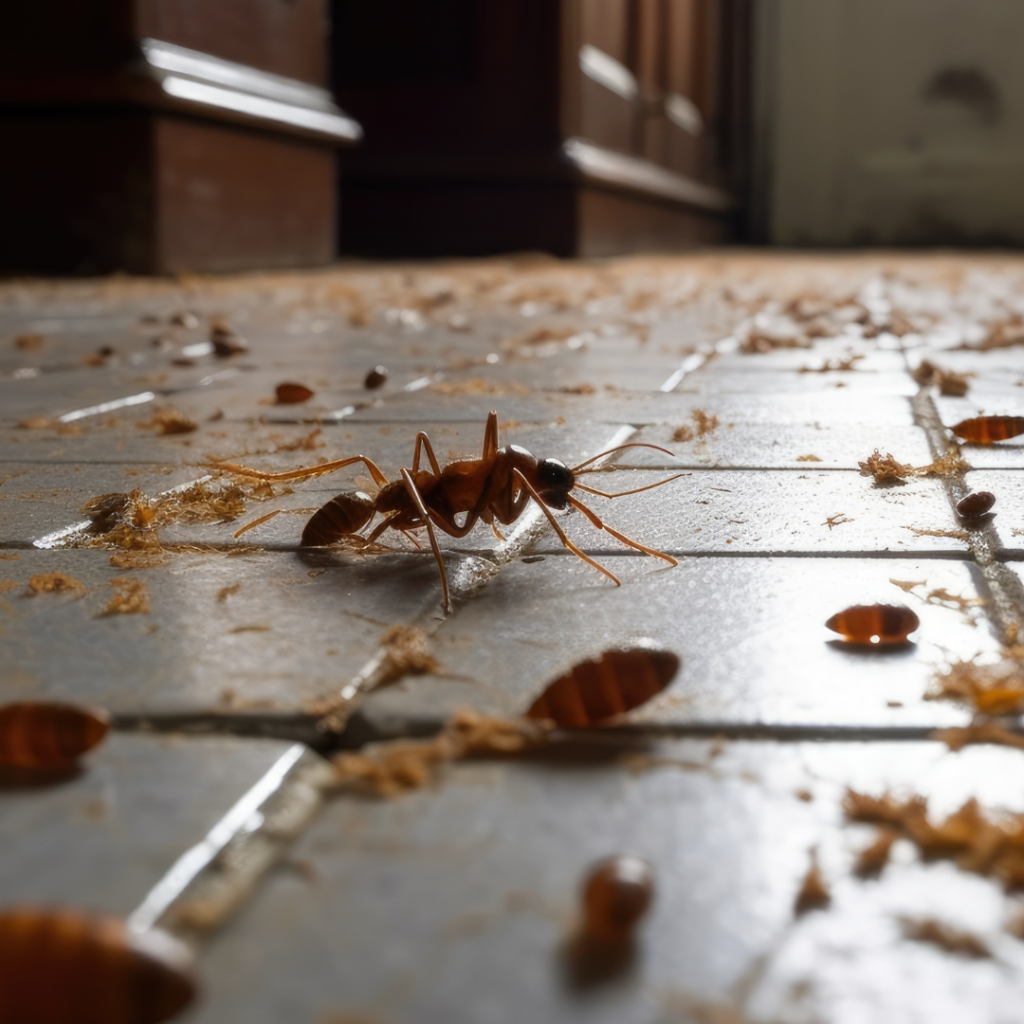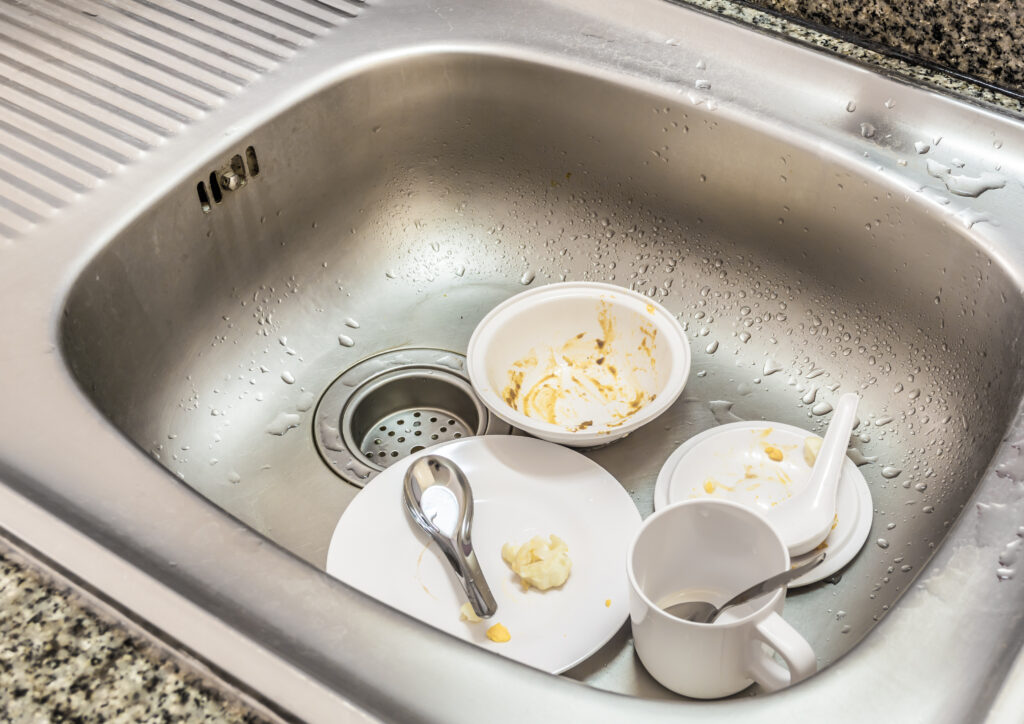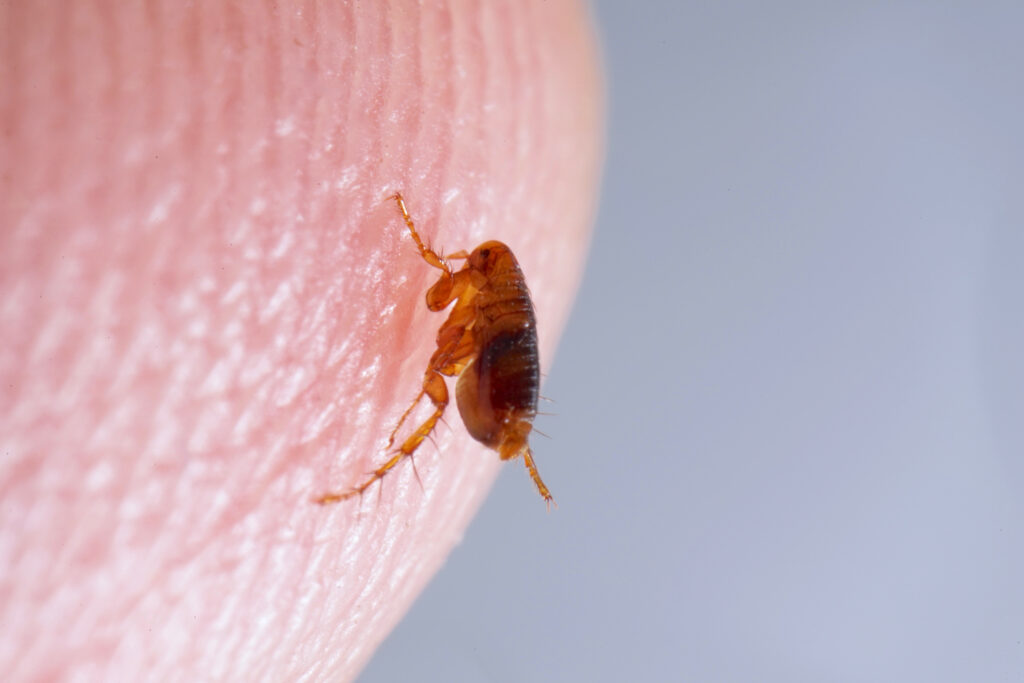Bark lice are insects, but they aren’t a form of lice. The formal name of this critter is Psocoptera with these small, shiny, long-antennae, brown insects found on trees with smooth bark and, occasionally on hardwood ones. They can also be found on some shrubs. You may also hear this bug referred to as “tree cattle” or “bark cattle.”
If you spot a cluster of them on your trees, you may at first think they’re aphids. They resemble them in appearance. Fortunately, they don’t attack plants the way that aphids do. Instead, they eat dead plant tissue off of trees in a beneficial way, removing algae, mold, and fungi. They don’t spread diseases to people or pets.
One problem associated with outdoor bark lice is that they create webbing each year that detracts from the appearance of your trees and shrubs. (At the end of a season, the bugs remove the webs.)
Another problem arises when the bark lice get into your home where they can contaminate your food and damage books—and this is the time of year when more people may find them indoors. Why? Because they can travel inside on Christmas trees and other holiday greenery that came from trees and shrubs. Then, as temperatures warm up, they get more active and start to seek food.
Controlling Bark Lice
Outdoors, if the webs on your trees and shrubs are unattractive and bothersome to you, you can spray the area with water. It may take only one application or the insects may return and the process may take a few rounds.
When it’s time to pick a holiday tree or bring other outdoor greenery inside, inspect everything closely, perhaps using a good flashlight. Most outdoor trees will have a few bugs but, if you see too many of them, that’s a sign to pick a different tree. If your Christmas store vendor uses a mechanical shaker before giving you the tree, this will likely dislodge many bugs. Or, you can shake it yourself and do another inspection before bringing the tree indoors.
If the bark lice gets indoors, perhaps on holiday trees, the most important early step is to prevent them from accessing food in your house. Without food, the bugs can quickly die off.
This insect, unfortunately, isn’t picky about what they eat. They’ll chew on books, paper, fabric, glue, wallpaper, contact paper, mold, mildew, fungi—along with plant-based foods that people eat. In fact, they appreciate materials that go into making books so much that, when they get indoors, they’re sometimes referred to as “book lice.”
It can be challenging to keep them away from books and other cellulose-based materials that attract them, but here are a couple of strategies. Book lice often head to damp locations, such as basements, because mold and mildew can grow more easily there. So, avoid storing old books in damp places in your home. These insects can spot mold that’s still microscopic in size; so, don’t rely upon your eyes or nose to determine if a box of old books has begun to mildew.
Dispose of items that have started to mildew and use a dehumidifier in parts of your home where dampness needs to be controlled. You can also clean areas with borax and enzymes to help ensure that mold and mildew don’t have a chance to take hold.
Next up: keep the bugs out of your food supplies.Strategies include to store pantry food in airtight containers. Once you’ve opened, say, a box of cereal, transfer the contents into a glass, plastic, or metal container with a lid that will make it easy to pour the food. Clean up crumbs and wipe up spills as soon as possible, including on countertops and stovetops, and on the floor. Wash dishes promptly and put pets’ food bowls away after they’ve eaten.
Bark Lice Infestation
Once they get inside, as long as they have access to food and water and can find the damp conditions they appreciate, they’ll keep reproducing. Eggs hatch about two to four weeks after being laid and the young insects will become adults themselves in a couple of months. One single mature female lays about 50 to 100 eggs, overall.
You may also notice a cluster of these shiny bugs on the outside of your home. They’ll settle into stucco, board siding, brick and more and tunnel beneath aluminum or vinyl siding. From there, they can eat fungi, mold, mildew and more on door frames, window sills, outdoor lighting fixtures and so forth. Once a few bark lice begin to feed in these places, others will likely join them.
Identifying Bark Lice
As mentioned before, they can resemble aphids and it can be hard to tell them apart. Trained technicians at Turner Pest Control, though, can determine the species of the bug on your trees, and outside and inside of your home. If identified as bark lice—and if the preventative measures we’ve described in this post didn’t get rid of them, pronto—we can create a customized professional solution to to address your specific problem.
Turner Pest Control
For more than 50 years, our professional pest control team has innovatively served our customers, providing unsurpassed service through the use of the latest and safest products—including the most environmentally friendly products on the market today. Turner Pest Control now has 15 branches serving people and families in Florida.
We’re one of the fastest-growing companies in our region, ranked in the Top 100 pest control companies in the United States. So, when you have problems with bark lice or other indoor or outdoor pests, we invite you to contact us online or to call us at 800-225-5305.
You can always count on prompt arrival times by technicians with a professional appearance and attitude. They’ll provide a thorough home inspection and then recommend a targeted treatment plan, explaining plan specifics—and then they’ll provide unrivaled, respectful customer service from start to finish.



